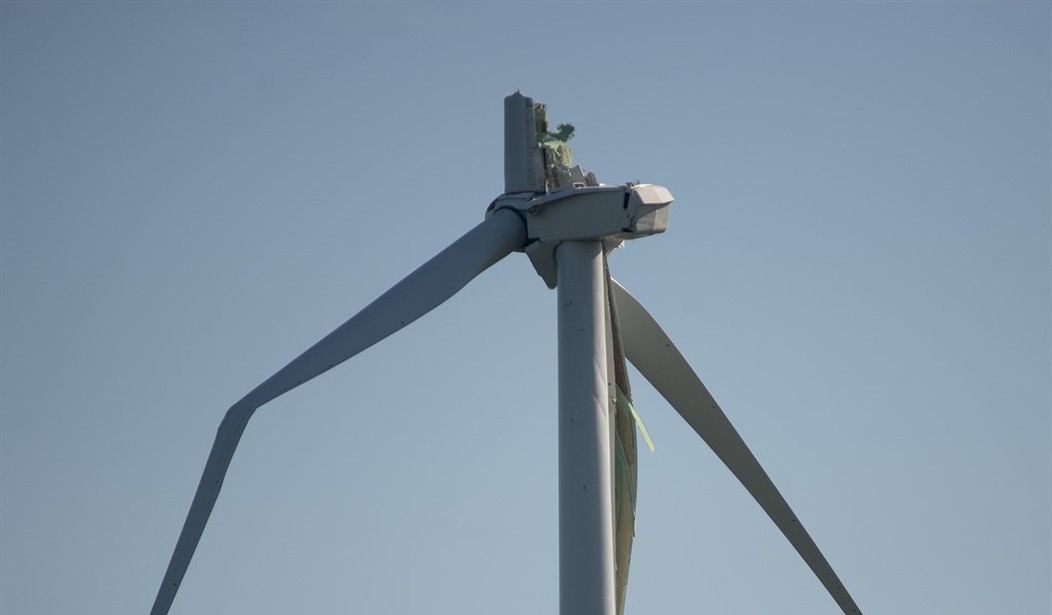Last month, a turbine blade in a wind plant off the coast of Martha’s Vineyard snapped off. Most of the blade, which is the length of a football field, fell into the ocean. Fiberglass and foam pieces have been seen floating in the ocean and washing up onto the beaches on Nantucket, which had to be closed.
The blade was not broken by a major storm or other drastic event. Rather, the wind itself—the very thing the blade was designed to harness—broke the blade.
The obvious question is whether wind plants in the ocean are truly environmentally friendly. Much has already been said about how wind turbines kill birds and disturb marine life. But now one must wonder what other maintenance costs are required to stay environmentally safe all the way through the decommissioning process. If wind itself can damage the turbines to the extent that massive cleanup efforts are required, our current regulatory scheme for offshore wind energy may need a revamp.
Wind turbines cannot live on forever. Like all industrial energy sources, they must be decommissioned—not an easy task. Indeed, as the technologies around these sources are quickly evolving, many wind plants are reaching their decommissioning phase sooner than originally planned. The Inflation Reduction Act (IRA), for example, has already demanded massive new intermittent capacities be added to the grid, which necessarily entails replacing old existing technology.
But do we have a good system in place to ensure an orderly decommissioning process that doesn’t ultimately fall on taxpayers or leave the environment worse off? In short, the answer appears to be no.
Recommended
The latest debacle off the coast of Martha’s Vineyard exemplifies the nature of the cleanup procedures in place when these large industrial machines break. It took the Vineyard Wind owners nearly a month to take down a single turbine, cutting the turbine into pieces to dispose of it. The blades, damaged or not, must be cut to size to be able to transport and decommission them.
The fiberglass used to make the turbines is also not recyclable and create waste. To dispose of it, it must be placed into landfills or incinerated—which raises additional environmental concerns. Of course, this requires that there is even a landfill capable of taking on waste of this magnitude.
Other heavily regulated energy industries like oil and nuclear have developed extensive decommissioning procedures after many decades of operational experience. Often this has led to a financial assurance—the demonstration of the ability to pay for decommissioning—being made by operators at the front end of a project’s construction and approval. Waivers are rarely given. Whether it means posting bonds, buying insurance, or demonstrating long-term fiscal strength, these procedures have largely worked to protect the public.
Given this, it is disturbing to see the relative indifference of government regulators to the financial burden that may fall upon taxpayers from this largely untested offshore technology. The Department of the Interior granted the two foreign companies that own Vineyard Wind a 15-year waiver of their financial assurance obligations when they greenlit the nation’s first large scale offshore wind energy plant in 2021. Considering that the project was the first of its kind, and its massive scale, the grant of a waiver was stunning.
No offshore wind decommissioning has occurred in the United States. Looking to the costs for onshore wind plants, or plants in other countries, demonstrates that it is expensive. Xcel energy, an owner of a land based wind plant, estimated that each turbine will cost from $400,000-$532,000 to decommission, making that single project cost $71 million to safely and responsibly shut down. Projections for the United Kingdom for decommissioning its offshore turbines total £10 billion.
Other countries investing in renewable energy, such as wind and solar, are already realizing the potential danger of a future renewable energy waste crisis. In Australia, experts have warned that solar panel waste is expected to reach crisis levels in the next two to three years, nearly a decade earlier than originally projected. The uncertainty of this technology demonstrates that we cannot wait to figure out how to pay for decommissioning.
The IRA already expedited U.S. renewable energy development by spending $369 billion to develop wind and solar energy. It is urgent that decommissioning and financial assurance models be put in place now. It is past time that the renewable energy industry start being responsible for financial assurances for decommissioning, just as other industries face. Regulation is vital and urgently needed to protect both the environment and the taxpayer. Vineyard Wind should be a wakeup call.
Curtis Schube is the Executive Director for Council to Modernize Governance, a think tank committed to making the administration of government more efficient, representative, and restrained. He is formerly a constitutional and administrative law attorney.

























Join the conversation as a VIP Member